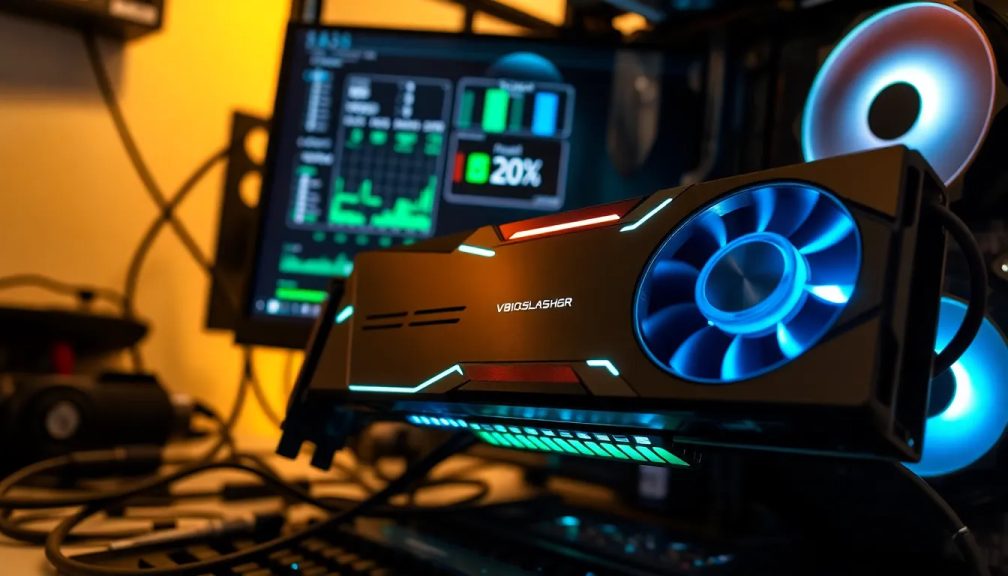Boost your Radeon RX 9070 speed by 20% with VBIOS flashing

If you're considering purchasing an AMD Radeon RX 9070 or already own one, you're in luck! Thanks to the resurgence of VBIOS flashing, you can potentially enhance your graphics card's performance significantly. This technique, once commonplace in the world of graphics cards, is becoming relevant again as enthusiasts discover ways to unlock additional power from their hardware.
Flashing the BIOS of a GPU has its roots in a time when manufacturers, like AMD and NVIDIA, released multiple graphics card tiers based on the same silicon. In those days, software limitations intentionally capped the performance of certain models, leaving untapped potential within the chips. Tech-savvy users found that by modifying the BIOS, they could activate disabled cores and boost clock speeds, effectively transforming lower-tier cards into higher-performing models.
Unlocking the Potential of the AMD Radeon RX 9070
Recent reports from users, particularly a notable one on Reddit by noVa_realiZe, have highlighted the exciting possibilities with the Radeon RX 9070. By flashing the BIOS of his PowerColor Radeon RX 9070 Reaper to that of the RX 9070 XT, he achieved remarkable results. Without any additional overclocking or voltage adjustments, the performance in 3DMark Steel Nomad jumped from 5,821 points to 6,416 points. With a power limit increase, the score reached a staggering 7,277 points, signifying a performance boost of over 25% just from a BIOS update.
In gaming scenarios, the RX 9070 also exhibited improvements. For instance, in the demanding title Cyberpunk 2077, playing at 1440p with Ray Tracing, the frame rate improved from around 70 FPS to 78 FPS after the BIOS update. This equates to an 11% performance increase, showcasing the tangible benefits of such modifications.
However, it’s important to note that this method comes with drawbacks, primarily concerning power consumption. The GPU’s power limit surged from 220W to 300W, enabling it to run at higher frequencies. This increase can lead to elevated temperatures, making adequate cooling crucial when considering BIOS flashing.
Understanding the Evolution of BIOS Flashing
Historically, BIOS flashing was a game-changer for many early graphics cards. For example, the ATI Radeon 9500 gained fame for its ability to be transformed into a Radeon 9700 through a simple BIOS modification, effectively doubling its performance potential. Similar feats were achieved with the NVIDIA GeForce 6800, which could be upgraded from a base model to a more powerful GT or Ultra variant by activating additional pipelines.
As technology progressed, manufacturers began to leverage silicon wafers more efficiently, which diminished the frequency of successful BIOS modifications. Nowadays, while it remains possible to improve performance through BIOS flashing, the gains are often less drastic. For instance, cards like the Radeon RX 480 could be flashed to behave like the RX 580, primarily by boosting clock speeds, rather than enabling disabled cores.
Performance Comparison: RX 9070 vs. RX 7800 XT
When evaluating the performance of the RX 9070, it’s natural to compare it against its more powerful sibling, the RX 7800 XT. While the RX 9070 shows promise with the VBIOS flashing technique, the RX 7800 XT typically offers superior raw performance due to its enhanced specifications. Here’s a brief comparison:
| Feature | Radeon RX 9070 | Radeon RX 7800 XT |
|---|---|---|
| Base Clock Speed | Default | Higher |
| Boost Clock Speed | After Flashing | Higher |
| Power Consumption | 220W (up to 300W after flashing) | More efficient |
| Gaming Performance (Cyberpunk 2077) | 78 FPS | 88 FPS |
This table illustrates the performance differences, particularly highlighting how the RX 7800 XT maintains its edge even when the RX 9070 is pushed to its limits through BIOS modifications.
Considerations Before Flashing Your VBIOS
While flashing the VBIOS of your Radeon RX 9070 can yield impressive performance boosts, it’s essential to consider the following factors:
- Cooling Solutions: Ensure your GPU is adequately cooled to handle the increased power draw and potential temperature rise.
- Warranty Implications: Modifying the BIOS may void the warranty of your graphics card, so proceed with caution.
- Technical Know-How: Familiarize yourself with the flashing process to avoid bricking your GPU.
- Source of the BIOS: Only use trusted sources for BIOS files to minimize risks.
In conclusion, the AMD Radeon RX 9070 presents a compelling opportunity for enthusiasts willing to unlock its full potential through VBIOS flashing. As users continue to experiment with this technique, it remains to be seen how AMD will respond, but for now, it appears that the community is enjoying newfound freedom in optimizing their graphics performance.
For a visual guide on the flashing process, check out this helpful video:




Leave a Reply